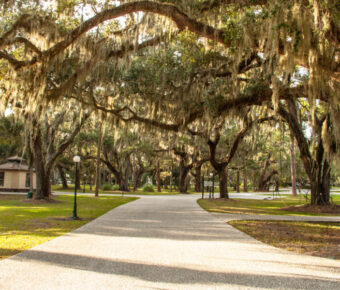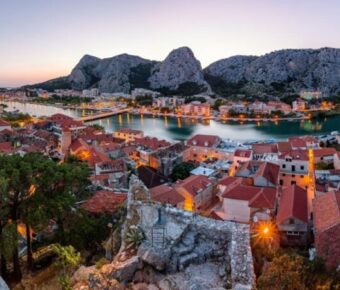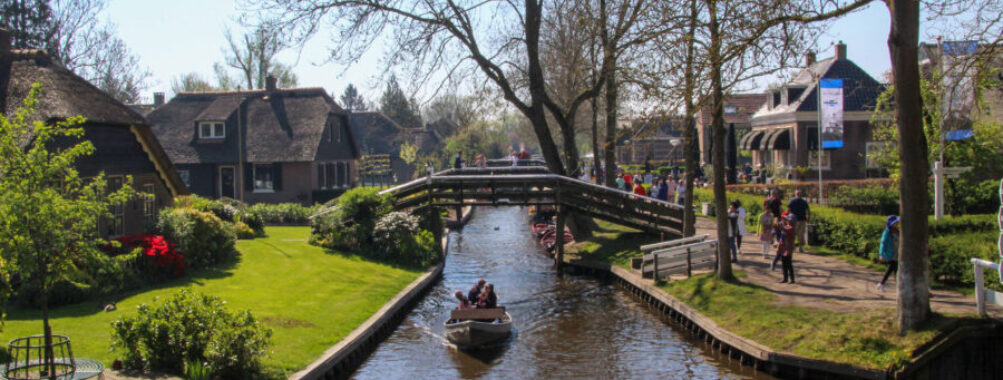
Best Time to Visit Giethoorn: Seasons, Tips & Hidden Gems Revealed
Ever dreamed of drifting through peaceful canals, thatched cottages on either side? Giethoorn in the Netherlands probably sits right at the top of your bucket list. But let’s be honest—timing really does make all the difference.
You’ll find the best time to visit Giethoorn is during spring or early autumn, when the weather’s pleasant and crowds haven’t taken over. There’s still all the magic of boat rides and village strolls, minus the elbow-to-elbow chaos of summer.
I’ve wandered Giethoorn in July—sure, the flowers explode with color, but wow, the crowds can be overwhelming. Fast forward to a chilly October morning, and suddenly I had stretches of canal all to myself.
It’s a totally different vibe. And if you don’t mind piling on some extra layers, winter brings its own kind of magic, especially when frost sparkles on those storybook rooftops.
Show up early or hang around after dinner, and you’ll see Giethoorn at its quietest. Those hours, when the day-trippers have vanished, are when the village feels truly special.
Key Takeaways
- Spring and autumn hit that sweet spot: good weather, fewer tourists
- Early mornings or late evenings = peaceful Giethoorn
- Each season brings its own mood and surprises
Table of Contents
- Understanding Giethoorn’s Unique Appeal
- Why Giethoorn Is Called the Venice of the North
- The Allure of Thatched-Roof Houses and Canals
- Giethoorn in the Province of Overijssel
- Seasons in Giethoorn: What to Expect Year-Round
- Spring: Blooming Canals and Fewer Crowds
- Summer: Festive Atmosphere and Peak Travel
- Autumn: Colorful Foliage and Tranquility
- Winter: Quiet Beauty and Unique Experiences
- Weather Patterns and Monthly Climate Insights
- Average Temperatures by Month
- Rainfall and Humidity Trends
- Best Months for Pleasant Weather
- How to Avoid Crowds and Make the Most of Your Visit
- Best Days of the Week to Visit
- Optimal Times of Day for a Peaceful Experience
- Major Holidays and Events to Avoid
- Getting to Giethoorn: Travel Tips and Routes
- Amsterdam to Giethoorn: By Train, Car, or Tour
- Navigating Giethoorn by Car and Parking Advice
- Public Transport and Local Connections
- Things to Do and See During Your Visit
- Canal Cruises and Boat Rentals
- Exploring Bovenwijde Lake
- Museums and Cultural Highlights
- Dining and Local Specialties
- Where to Stay: Accommodation Options for Every Season
- Charming Hotels and B&Bs
- Unique Stays Along the Canals
- Top Picks: Hotel de Harmonie and More
- Exploring the Surroundings: Weerribben-Wieden National Park
- Nature Trails and Outdoor Activities
- Wildlife Watching and Scenic Views
- Combining Giethoorn with the National Park
- Frequently Asked Questions
- What are the peak tourist seasons to avoid in Giethoorn for a more authentic experience?
- How does the weather influence the activities available in Giethoorn throughout the year?
- Can you recommend the best month for a peaceful boat tour in Giethoorn?
- Are there any special events or local festivals in Giethoorn that are ideal for a visit?
- What are the opening times for the main attractions in Giethoorn, including weekends?
- How does the experience of visiting Giethoorn differ between the high season and the off-season?
- Book Your Dream Experience
- More Travel Guides
Understanding Giethoorn’s Unique Appeal
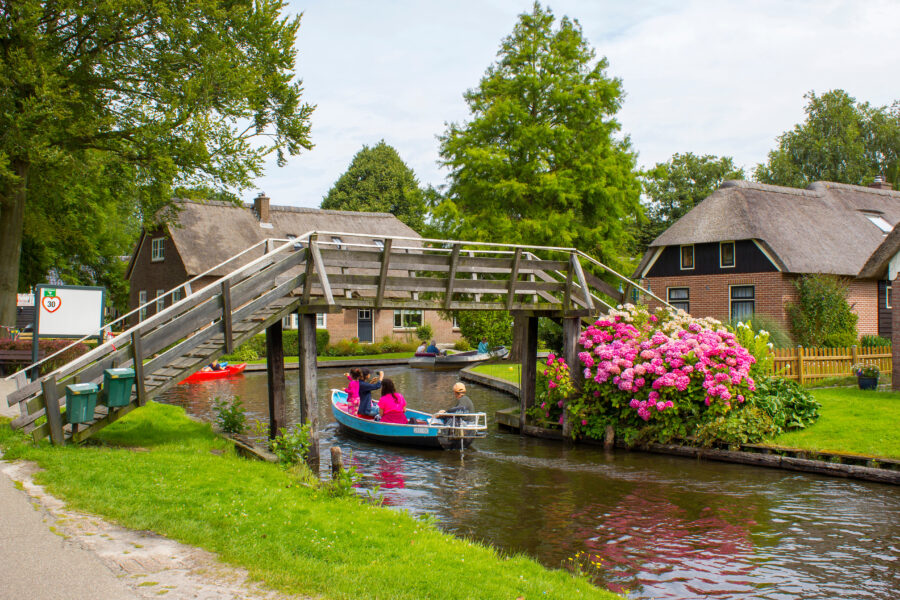
This quiet Dutch village draws travelers who crave something different. There’s a mix of waterways, old homes, and a rural vibe that feels worlds away from Amsterdam’s buzz.
Why Giethoorn Is Called the Venice of the North
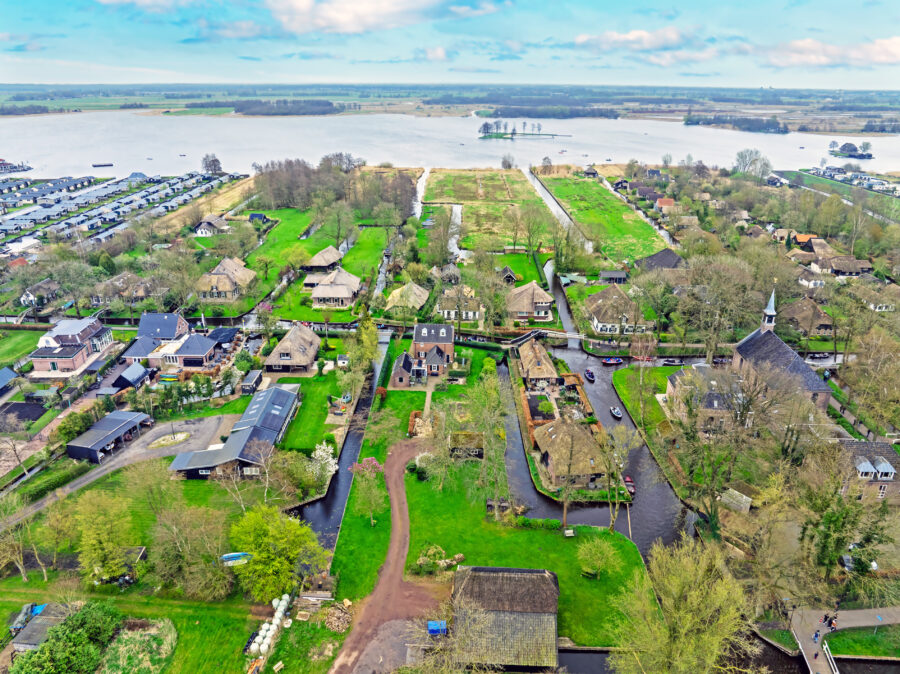
People call Giethoorn the Venice of the North, and honestly, the nickname fits. Forget cars—here, canals line up with small boats everywhere you look. Locals glide around in whisper boats, those electric ones that barely make a sound.
It’s not just a catchy phrase. Step into Giethoorn, and you’ll see how the canals shape daily life. Groceries, building supplies, and even mail once traveled by boat. That rhythm hasn’t totally disappeared, even with all the tourists.
I remember the first time I rented a little punt. Steering? Way trickier than I thought.
But as I floated past gardens and under bridges, I got a sense of what life here used to be—slow, peaceful, and so connected to the water. It’s not Venice with gondolas, but it’s got its own Dutch charm.
The Allure of Thatched-Roof Houses and Canals
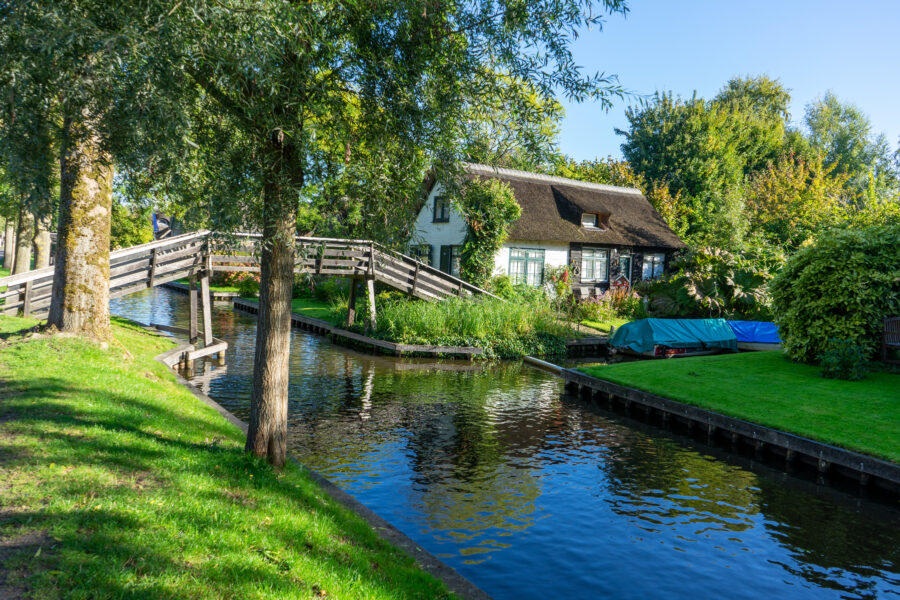
Those houses! The thatched roofs stand out, and you can tell they’re not just for show. Maintaining them takes real skill, and they actually keep the cottages cozy for decades.
Walk the footpaths, and you’ll see gardens overflowing with tulips, roses, hydrangeas—whatever’s in season. The blend of water, wooden bridges, and these old homes creates a scene that feels frozen in time.
One afternoon, I stopped to chat with a local re-thatching his roof. He told me the craft runs in the family, and the reeds come from nearby wetlands. That stuck with me—it’s not just a pretty look, it’s a tradition rooted in the land.
Giethoorn in the Province of Overijssel
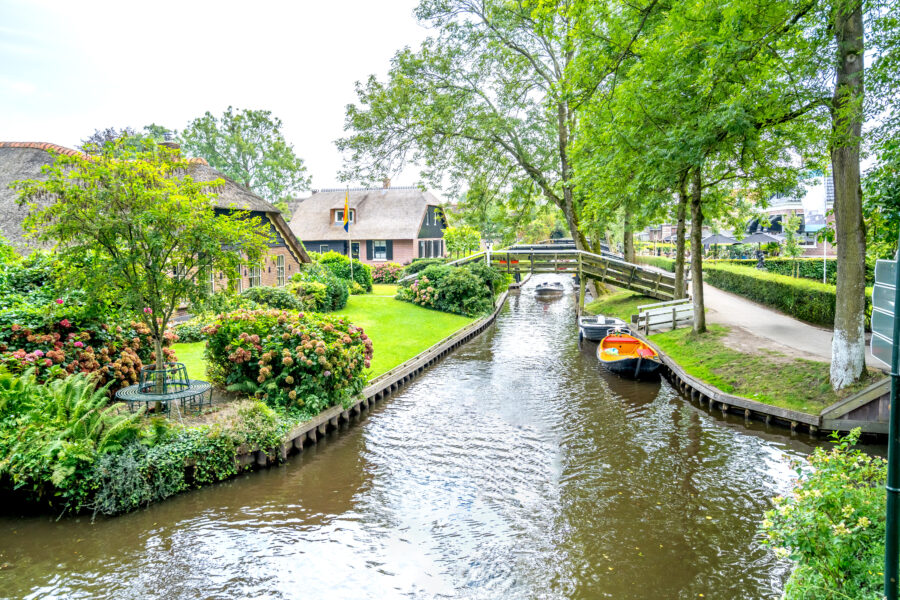
Giethoorn sits in Overijssel, tucked away in the eastern Netherlands. Not everyone puts this province on their travel list, and honestly, they’re missing out. There’s more here than just the village—think peat bogs, lakes, and sprawling nature reserves.
The village grew up around peat digging. People dug the first canals to haul peat, and those waterways ended up shaping the whole place. That’s why Giethoorn stands out from other Dutch towns.
If you stay here, you can branch out to nearby towns like Steenwijk or hop on a bike through De Weerribben-Wieden National Park. It’s one of Europe’s largest wetlands, and it really puts Giethoorn in context.
For more nitty-gritty on planning and seasons, check out guides like Best time to visit Giethoorn. They break down how crowds and weather can change your whole trip.
Seasons in Giethoorn: What to Expect Year-Round
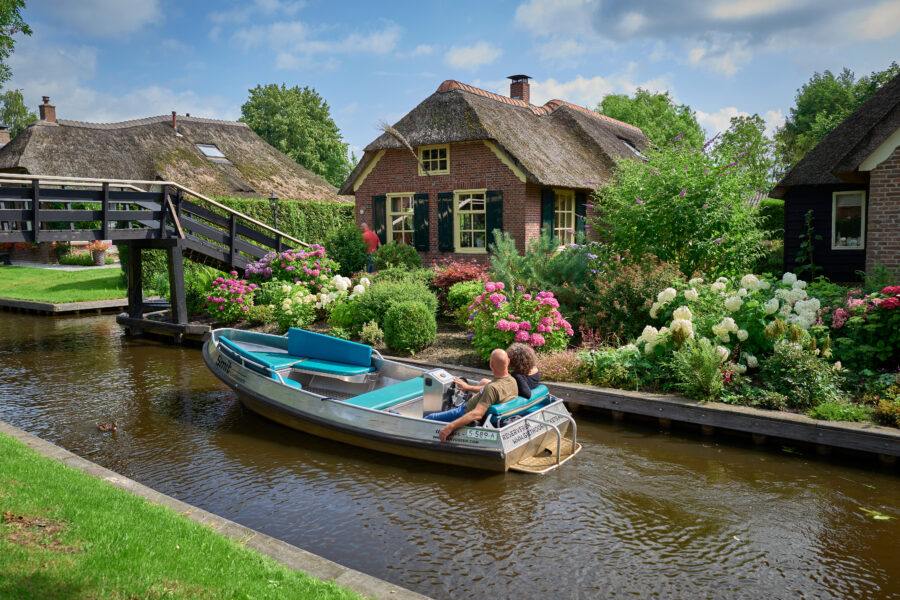
Giethoorn transforms with each season, and your experience will totally depend on when you show up. From flower-lined canals to frozen waterways, there’s always something different going on.
Spring: Blooming Canals and Fewer Crowds
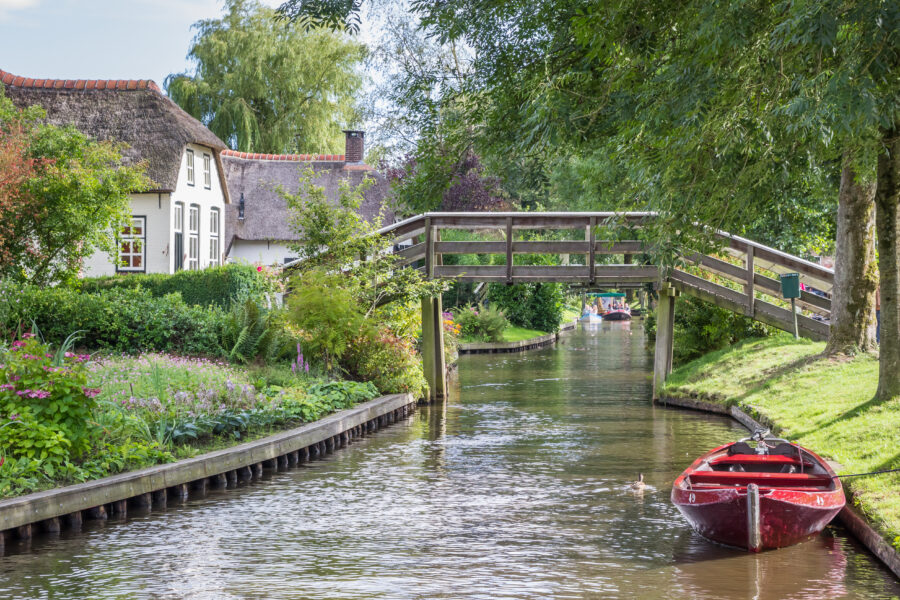
Spring in Giethoorn? It’s fresh, calm, and just a bit chilly—especially in April and May. Green creeps back into the canals, and tulips and wildflowers start popping up everywhere. You don’t get the summer crowds, so you can actually hear the water lapping against the boats.
Temperatures usually hover between 8°C and 18°C (46°F to 64°F). You’ll want a jacket in the mornings, but most days are perfect for a lazy boat ride.
If you’re into photography, this is your moment. The light is soft, and you won’t have to dodge other boats in your frame. I still remember the photos I took in early May—mirror-like water, thatched cottages, barely anyone else around.
Summer: Festive Atmosphere and Peak Travel
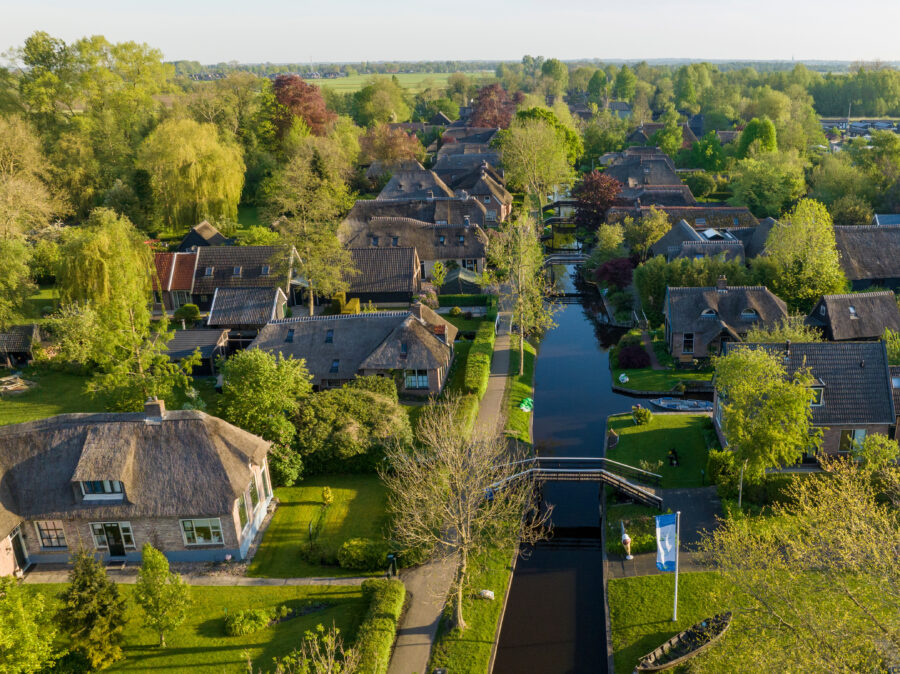
Summer brings Giethoorn to life. June through August, you’ll get warm days (22–25°C/72–77°F) and a village that feels like a living postcard. Families take over the boats, cafés spill onto the streets, and the whole place buzzes.
Here’s the thing: everyone else has the same idea. July and August, especially during Dutch school holidays, can get wild. Giethoorn tips by locals suggest coming on a weekday morning before 11 AM if you want to dodge the crowds.
I’ll admit, I’ve tried boating on a sunny July Saturday—it felt like bumper boats out there. Fun for a while, but it’s not exactly relaxing. Still, if you’re up for the energy, the summer buzz has its own appeal.
Autumn: Colorful Foliage and Tranquility
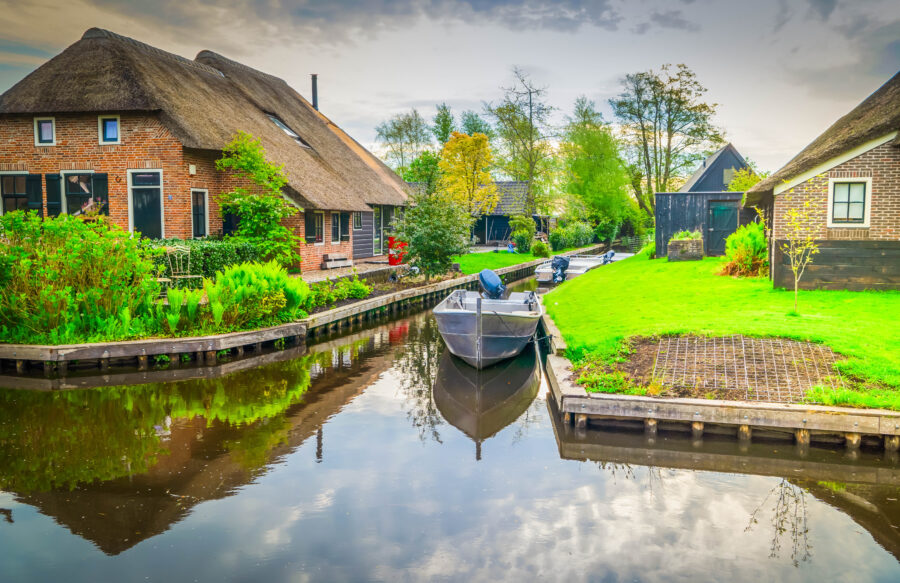
Autumn doesn’t get enough love here. From late September to November, the trees go golden, and reflections in the canals are unreal. The air gets crisp (10°C to 15°C/50°F to 59°F), and the crowds disappear.
You can wander the narrow paths at your own pace. Boat rentals stick around, but you won’t be dodging traffic. One October afternoon, I just drifted along the canal, scarf wrapped tight, watching leaves float by—total peace.
Another bonus? Accommodation prices drop after summer. You can stay closer to the action without breaking the bank. If you’re into slow travel and quiet vibes, autumn is hard to beat.
Winter: Quiet Beauty and Unique Experiences
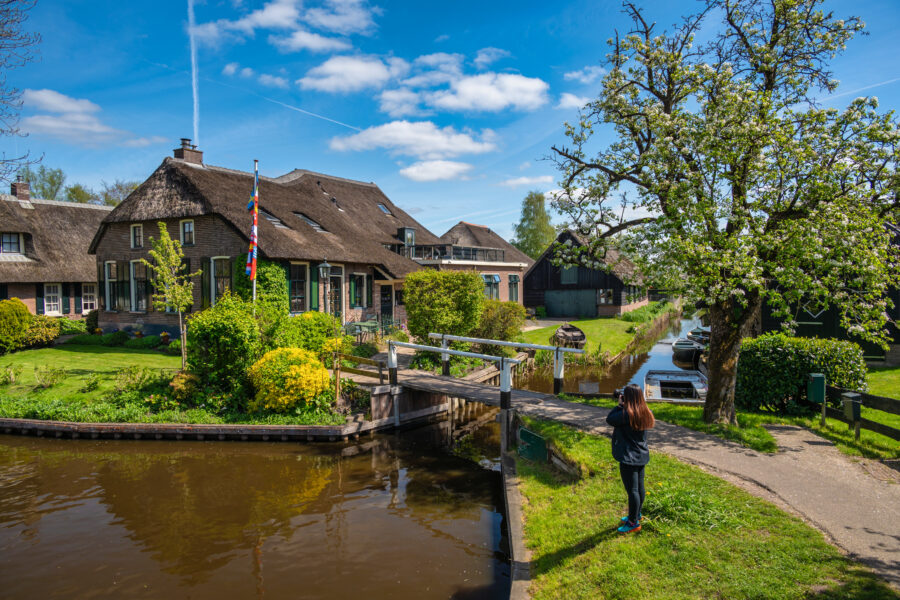
Winter is Giethoorn’s quietest season. December to February brings chilly days (0°C to 5°C/32°F to 41°F) and short daylight, but when snow or frost hits, the village looks straight out of a painting.
Tourists vanish, so you’ll have the canals and bridges pretty much to yourself. Some boat rentals shut down, but walking the frosty paths is just as magical. If the ice thickens enough—a rare treat—you might even catch locals skating through the canals.
One January, I wandered through Giethoorn as snow dusted everything. The silence was unreal; I could hear my own footsteps crunching. Cold travel isn’t for everyone, but if you want peace and a whole new side of Giethoorn, winter’s got you.
See Related: Where to Stay in Amsterdam: Top Picks for Neighborhoods
Weather Patterns and Monthly Climate Insights
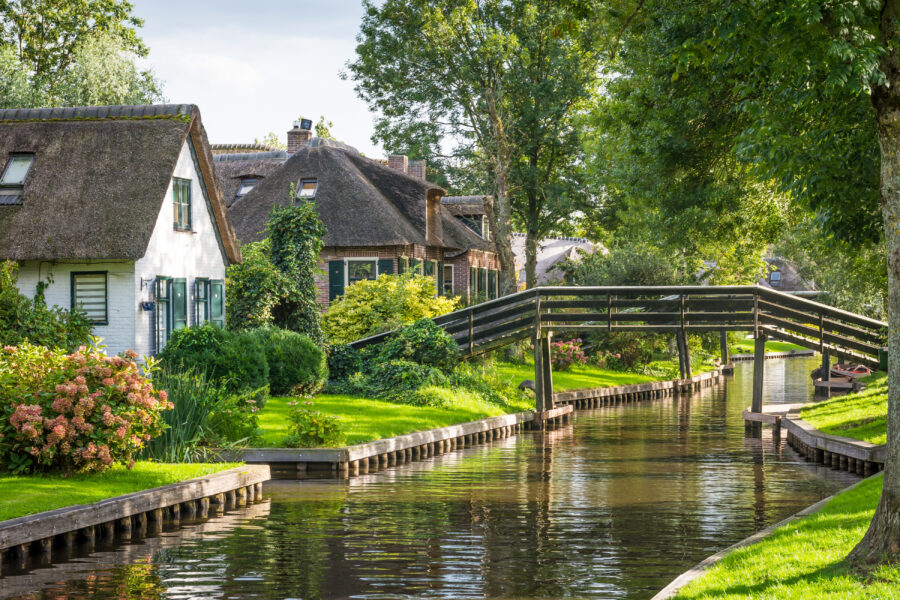
Giethoorn’s weather drifts gently from season to season. Winters stay mild, springs burst with color, summers warm up (but never get oppressive), and autumns turn crisp. The climate’s pretty moderate, but even small changes in temperature or daylight can totally shift your experience.
Average Temperatures by Month
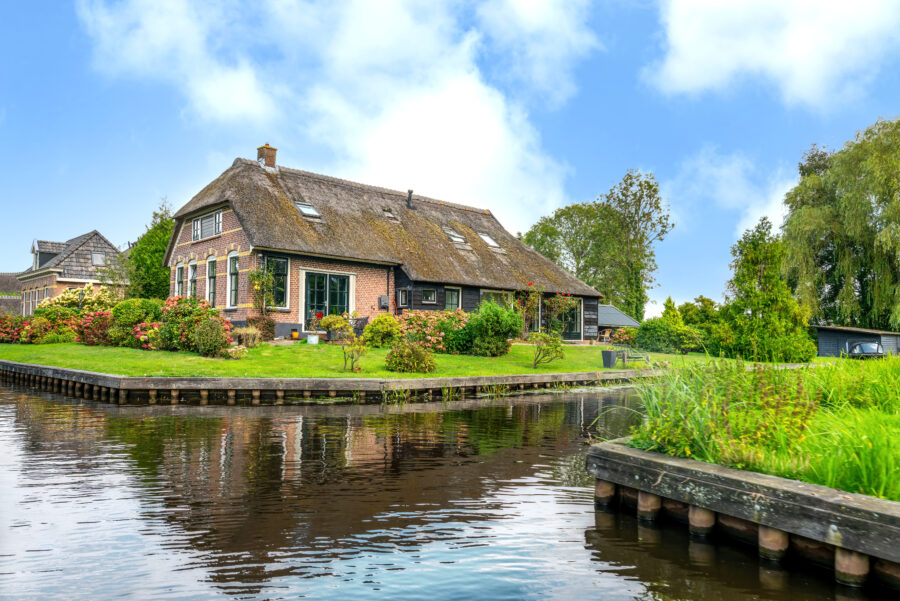
Giethoorn’s temperature doesn’t go to extremes. Winters hover around 2–6°C—cold, but not bone-chilling. With a warm coat, walking along the canals in January or February can actually feel pretty zen.
Spring brings a lift. By April, you’re looking at 12–15°C, and May often hits 18°C. Suddenly, flowers bloom and cafés set up outside.
Summer’s the jackpot. June through August, highs sit between 21–23°C, though the odd heatwave can push things to 30°C. Nights cool off, so sleeping’s easy (which you can’t say for every European city).
Autumn cools down slowly. September still feels nice at 18–20°C, but by November, you’re back to 8–10°C. The crisp air and those fall colors make it a sneaky-great time to visit.
Rainfall and Humidity Trends
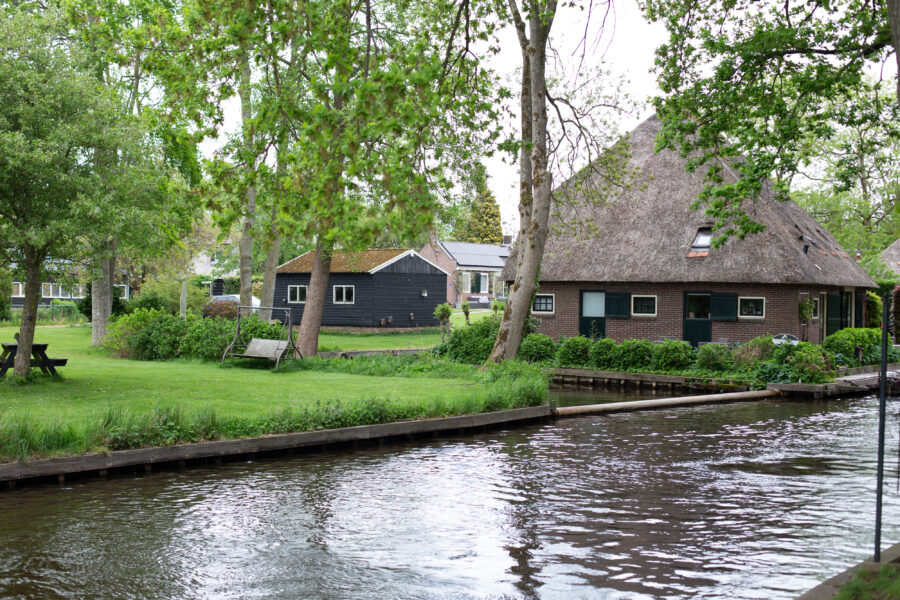
Rain’s just part of Dutch life, and Giethoorn’s no different. You’ll get more light showers than wild downpours. A small umbrella or rain jacket goes a long way if you want to stay out and about.
August through November brings the most rain, averaging 80–100 mm. Summer showers can show up out of nowhere, but they usually pass fast. I’ve been caught mid-boat ride, and honestly, it just made things feel more adventurous.
Humidity sticks around, usually 75–85%. It’s not sticky, just a gentle dampness—more noticeable when it’s cold. If you’re planning to walk or bike a lot, quick-dry clothes are a lifesaver.
Best Months for Pleasant Weather
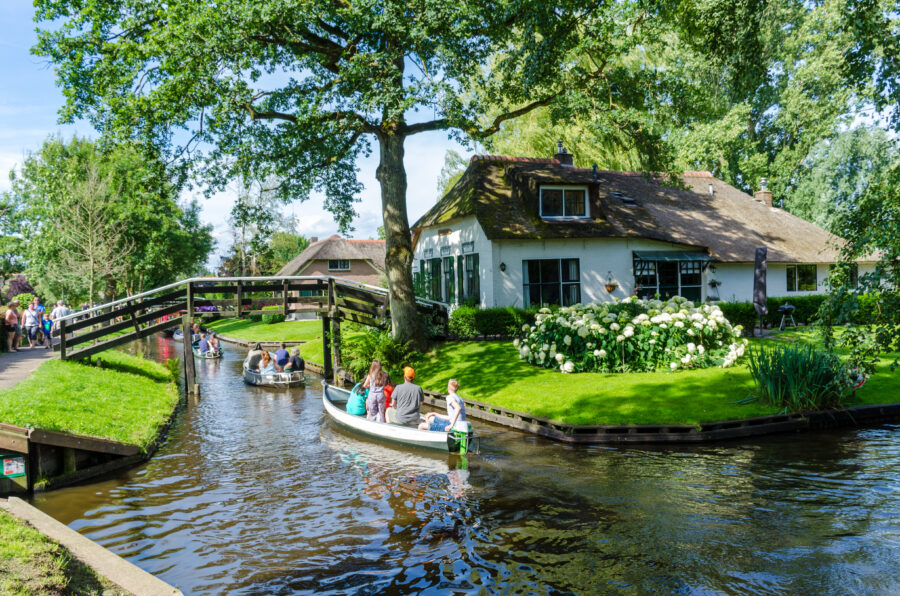
If you want sunshine, mild temps, and smaller crowds, late spring and early autumn win. May and September usually hit 18–20°C, and you won’t have to dodge tour groups every two steps.
June through August is gorgeous, with long days and warm evenings. July gets almost 10 hours of sunshine daily, according to climate data for Giethoorn. But you’ll pay for it with crowds and higher prices.
If you can, skip Dutch public holidays. The village gets slammed, especially around Pentecost and Ascension Day—Giethoorn Village’s visitor guide has the details. Want a quiet morning? Arrive before 10 AM and thank yourself later as you glide down the canals with barely a soul in sight.
How to Avoid Crowds and Make the Most of Your Visit
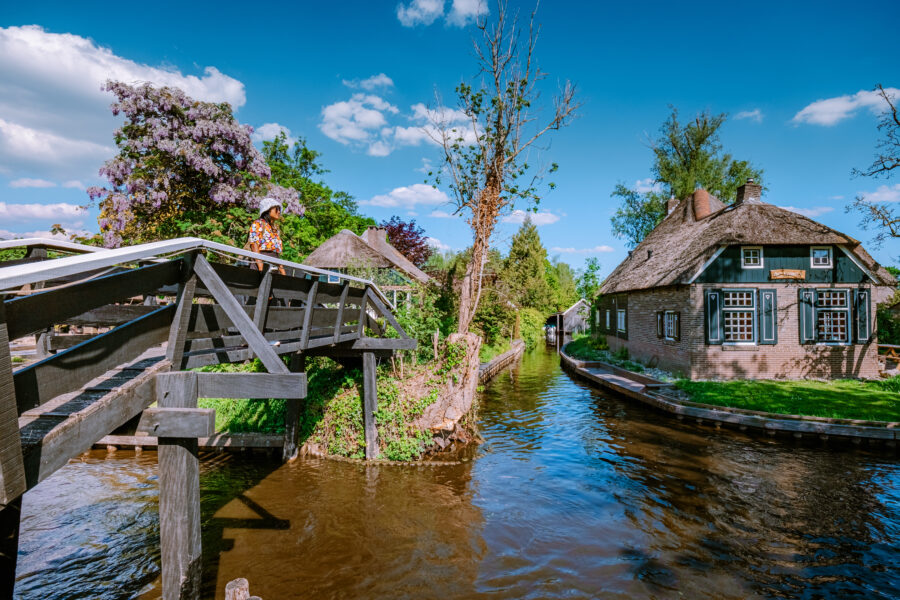
Giethoorn feels almost enchanted when it’s quiet, but that magic disappears fast if you land at the wrong time. The secret? Know which days, hours, and holidays to avoid. That way, when you explore the canals and cottages, you won’t feel like you’ve wandered into a theme park.
Best Days of the Week to Visit
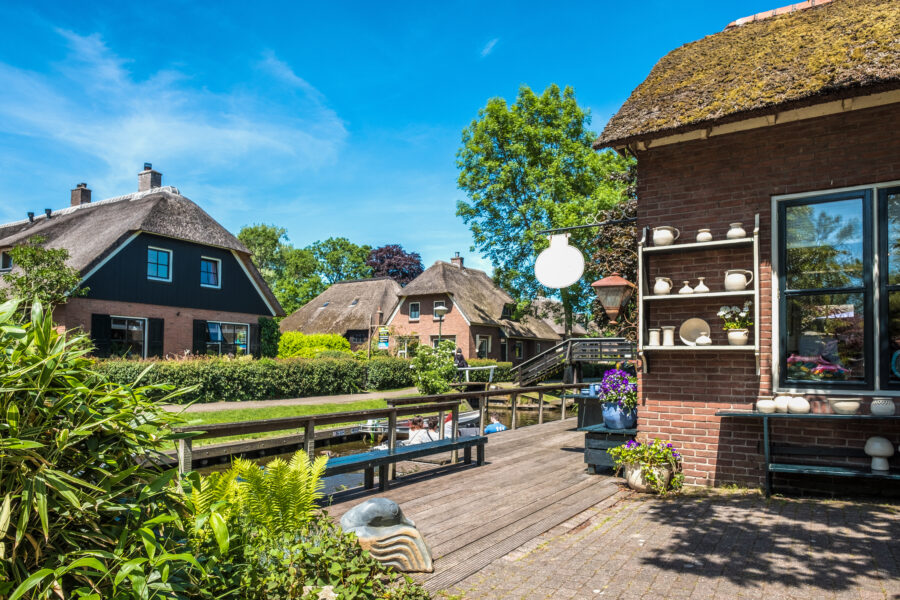
If you’re thinking about a day trip to Giethoorn, trust me—weekdays are your golden ticket. Mondays? They’re usually the quietest, with just a gentle hum of visitors.
As the week rolls on, things get busier. By Friday, the crowds have started to gather, and weekends? Well, brace yourself. It can get seriously packed.
I remember wandering through Giethoorn on a Wednesday morning. It wasn’t deserted, but I could still snag a boat without any fuss. The footpaths felt open, and I didn’t have to dodge tour groups every few steps.
Now, compare that to a Sunday in July—yikes. The main canal turned into a people-jam, and moving around felt like a challenge.
So, if you can swing it, plan for a Monday or Tuesday. You’ll thank yourself later when you’re gliding along the water with no line for a boat in sight.
And if you’ve got wiggle room, steer clear of Dutch school holidays. That’s when families from all over the country descend on the village, and it gets wild.
Optimal Times of Day for a Peaceful Experience
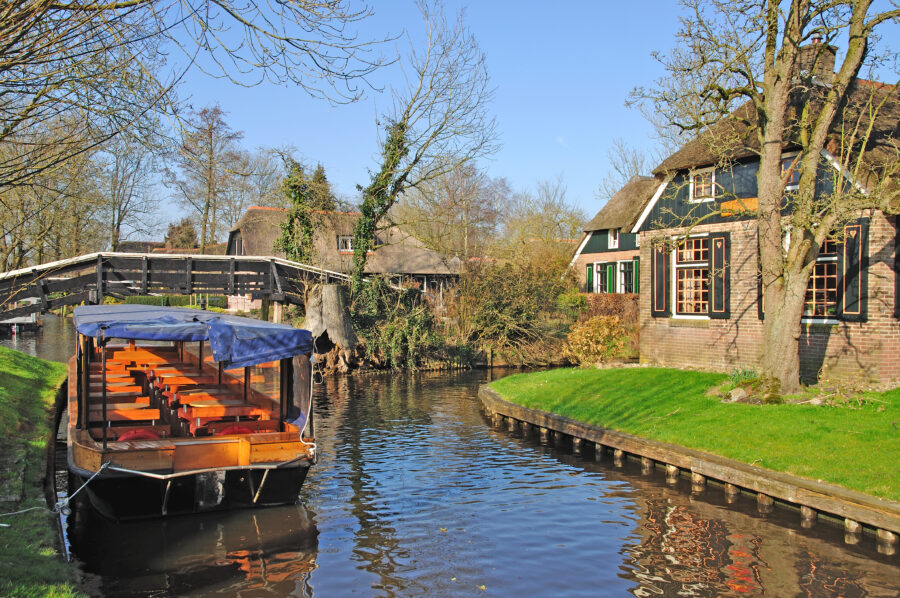
Timing isn’t just a detail—it’s everything. Most tourists show up around 11 a.m. and trickle out by 5 p.m. If you arrive at 8 a.m., you’ll probably have the village almost to yourself.
I’ve tried both early mornings and late afternoons. Honestly, evenings win for me. The light softens, locals start to unwind, and you can still rent a boat without the midday commotion.
Restaurants mellow out, too, once the day-trippers leave. If you’re into photography, mornings are a dream—calm canals, sharp reflections. But if you’re more of a slow wanderer, evenings are just as peaceful, and you don’t have to haul yourself out of bed at dawn.
Major Holidays and Events to Avoid
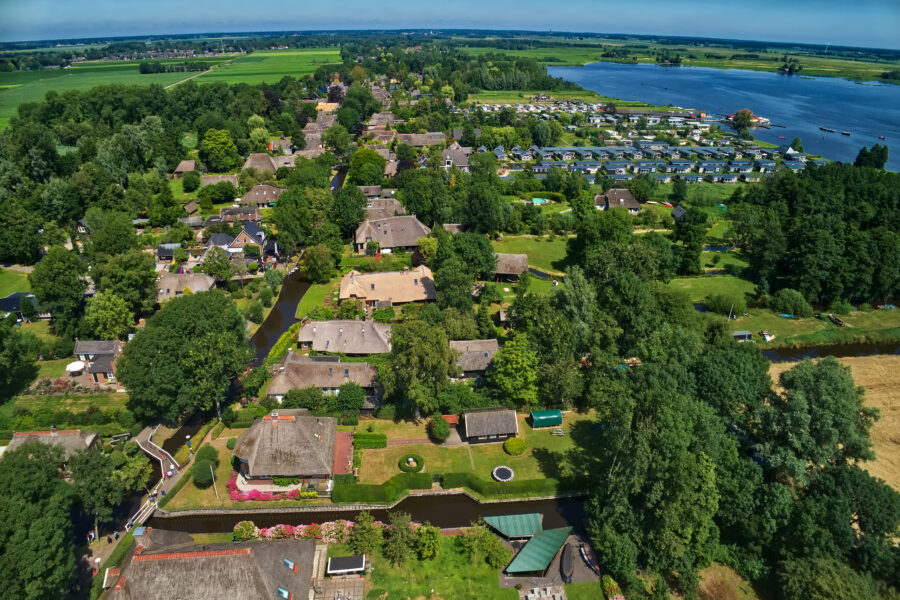
Certain Dutch holidays can make Giethoorn feel a bit overwhelming. On days like Pentecost and Ascension Day, the crowds swell so much that even locals steer clear.
If you visit during these times, expect long lines and busy waterways. School holidays, especially from mid-July through late August, are another period I’d skip. That’s peak vacation, and the village buzzes like an amusement park.
Even weekdays are crowded. If you’ve got flexibility, aim for spring or autumn. April, May, and September are sweet spots: lighter crowds, mild weather.
Winter’s an option, too, if you don’t mind the chill. Sometimes the canals get a frosty dusting—honestly, it’s like walking into a postcard.
For up-to-date info, the Giethoorn Village sailing app is a lifesaver. It shows boat availability and busy routes, so you can dodge the bottlenecks.
Getting to Giethoorn: Travel Tips and Routes
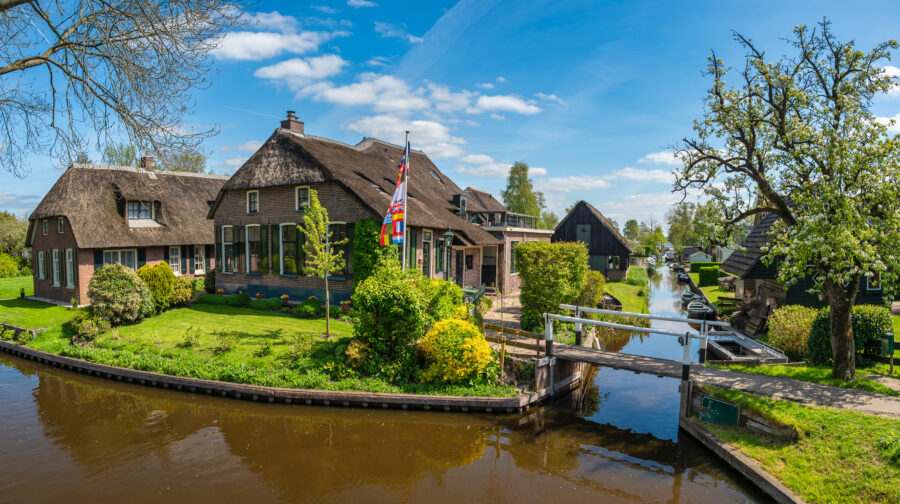
Getting to Giethoorn takes a bit of planning. This little Dutch gem doesn’t have its own train station or a major highway nearby. You’ll probably mix train, bus, or car travel, and once you arrive, it’s all about parking, boats, or walking—no cars in the historic center.
Amsterdam to Giethoorn: By Train, Car, or Tour
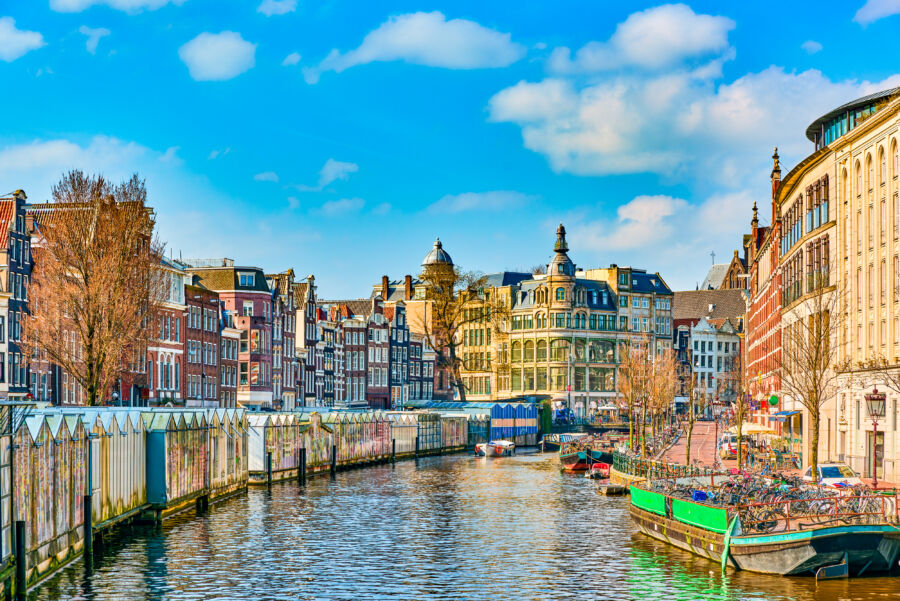
Most people travel to Giethoorn from Amsterdam by train and bus. You catch a train to Steenwijk, the nearest station, and then hop on a bus straight to the village.
It’s a pretty straightforward route, but it can take about two hours depending on connections. Driving speeds things up if you’re comfortable behind the wheel. The trip from Amsterdam usually takes around 90 minutes.
You can rent a car in the city or book one online through rental car sites. Having your own ride means you can explore nearby towns at your own pace.
Tours are another way to go. Day trips from Amsterdam often bundle transport, a boat ride, and sometimes a stop in another village. Everything’s arranged for you, but you’ll be on their schedule.
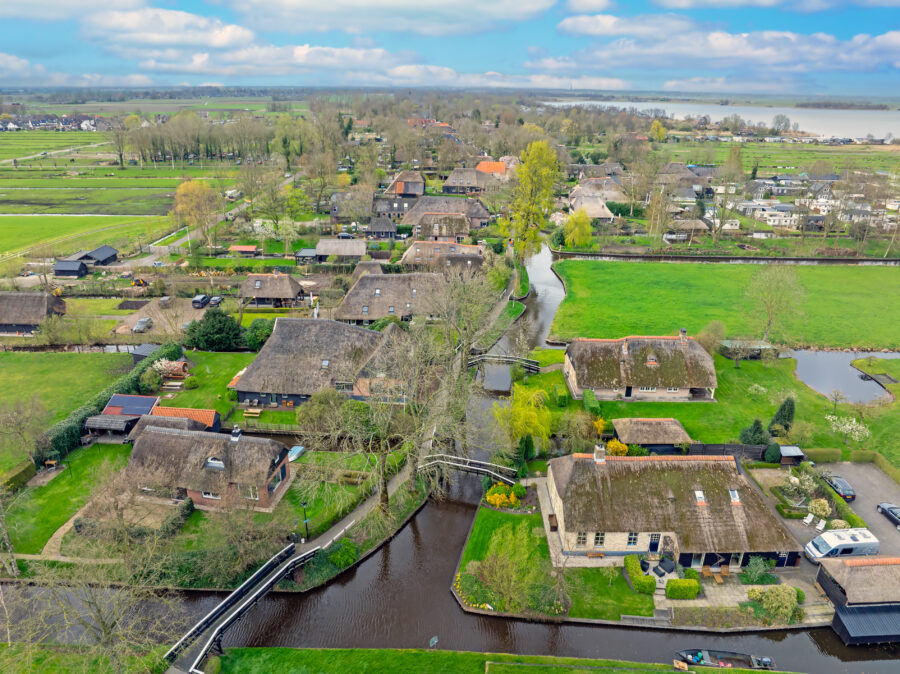
Giethoorn’s historic center is car-free, so you can’t just drive up to the canals. You’ll park on the edge of the village and either walk in or rent a boat.
Parking lots are easy to find, and most are just a 10–15 minute stroll from the main canals. If you’re coming in summer, get there early—parking fills up fast, especially on weekends. Some lots are free, but the closer ones usually charge a small fee.
Honestly, I prefer parking a bit farther out and enjoying the walk in. It’s less stressful than circling for a closer spot.
Dutch traffic rules are strict. Don’t leave your car in unauthorized spots—fines are steep, and locals get frustrated when visitors block narrow roads.
Public Transport and Local Connections
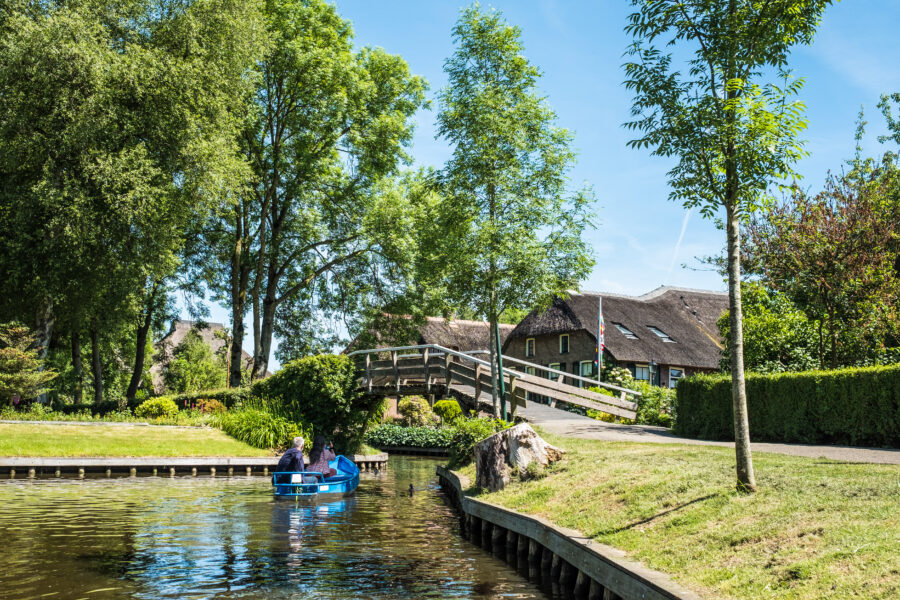
If driving’s not your thing, public transport works great. From Amsterdam, you’ll take the train to Steenwijk, then hop on bus 70 or 270 straight to Giethoorn.
The buses drop you near the center, so there’s not much walking involved. During peak times, buses can get packed, so expect a bit of a wait. If you’re hauling luggage, it’s doable but not exactly roomy.
Traveling light makes things easier.
Or, you could cycle from Steenwijk. Dutch bike paths are top-notch, and the ride takes about 30 minutes. It’s a lovely way to see the countryside at your own speed.
If you’re flying into the Netherlands, compare flights to Amsterdam and plan your next steps from there. Public transport’s reliable, but if you’re in a hurry, a car or tour is usually faster. It really comes down to whether you want flexibility or convenience.
Things to Do and See During Your Visit
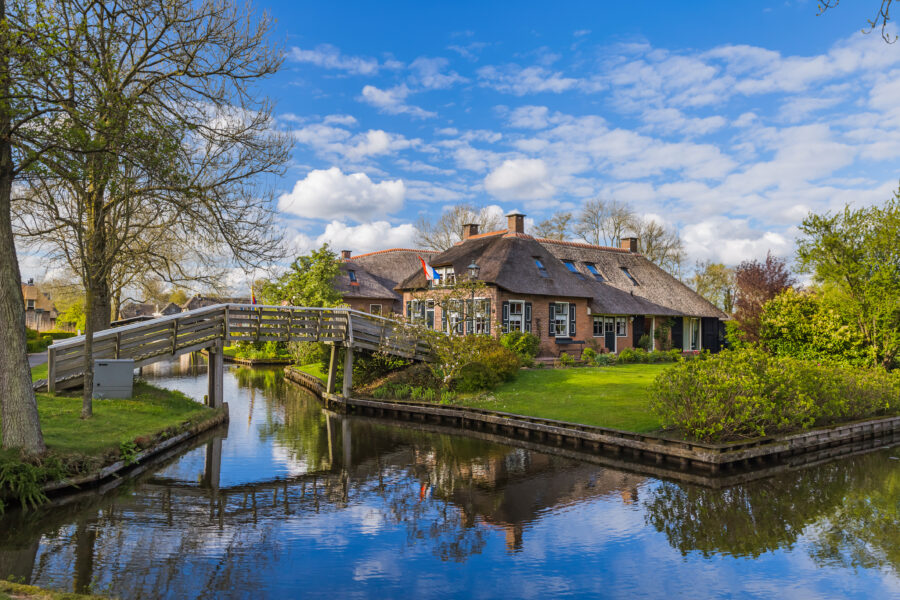
Giethoorn isn’t just about pretty canals. You’ll find peaceful waterways, open lakes, quirky museums, and cozy restaurants that really capture the Dutch village vibe. Every experience feels a little different, so you can mix active exploring with slow moments.
Canal Cruises and Boat Rentals

The canals are the heart of Giethoorn, and a boat ride is a must. You can join a guided canal cruise if you want to relax and hear stories about the village. These cruises usually last about an hour and take you past the main sights—bridges, historic houses, all that good stuff.
If you want more freedom, rent a whisper boat. They’re electric, easy to steer, and super quiet—great for families or first-timers. Kayaks and canoes are available, too, if you’re feeling a bit more adventurous.
I always suggest heading out early in the morning or later in the evening when the canals are calmest. Midday gets busy, especially in summer. If you like to plan, you can book activities in advance to lock in your spot during busy days.
Exploring Bovenwijde Lake
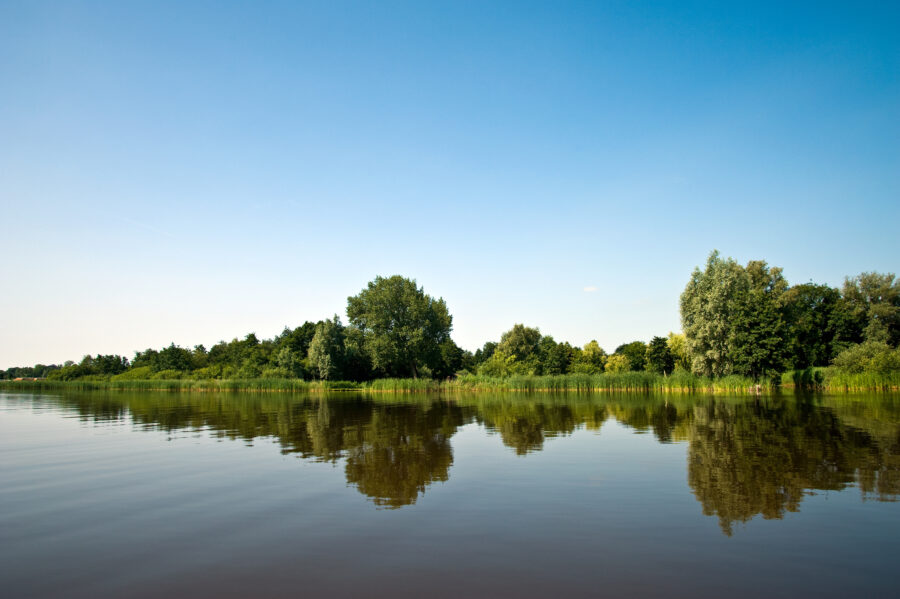
After you’ve cruised the narrow canals, make your way out to Bovenwijde Lake. It’s wide open, perfect for sailing, paddling, or just floating around without worrying about bridges.
The water’s shallow in places, so on warm days, locals swim here. You’ll often see families with picnic baskets anchored in the middle of the lake. It’s quieter than the village center, with birds and reeds lining the edges.
If you love photography, this is where you’ll snap those classic shots—boats against big Dutch skies. Renting a boat for the whole day lets you explore the canals first, then drift out to the lake for a totally different vibe.
Museums and Cultural Highlights
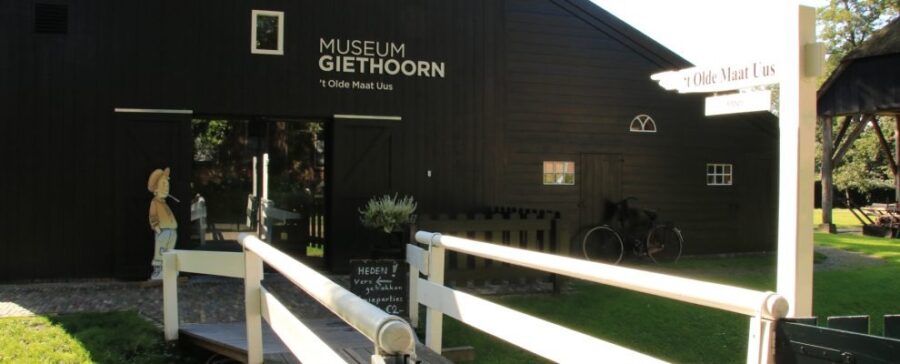
Giethoorn has more than water—there are a few small museums worth a stop. The most popular is Het Olde Maat Uus, a farmhouse museum showing how villagers lived and worked back in the day.
You’ll see old tools, furniture, and traditional clothing. De Oude Aarde is another fun find—a mineral and fossil museum with a surprisingly colorful collection. Kids seem to love it.
If you’ve got extra time, check out some specialty museums scattered around. They’re small but give you a breather from the crowds and a peek into local life. You can find tours that combine museum visits with boat rides, which is handy if you’re pressed for time.
Dining and Local Specialties
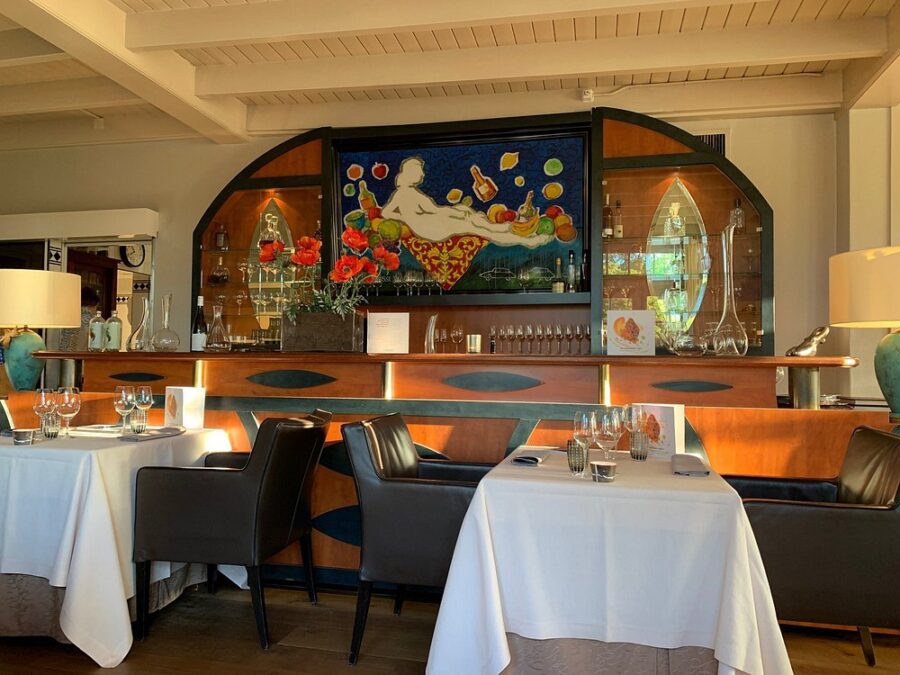
Food in Giethoorn leans Dutch and European, but the setting makes it memorable. Many restaurants line the canals, so you can eat while boats drift past.
De Lindenhof is the big name—a Michelin-starred spot that’s a splurge, but sometimes you just have to treat yourself. For something laid-back, try a pancake house or café, or grab Dutch snacks like bitterballen.
I always pick up a stroopwafel from a bakery—it’s simple but feels like part of the whole experience. In summer, try to snag an outdoor table.
The atmosphere is lively, and you feel like you’re part of the village. When it’s colder, the cozy interiors with wood beams and fireplaces make eating in just as good.
See Related: Best Places to Visit in Europe This Year
Where to Stay: Accommodation Options for Every Season

Giethoorn offers a mix of small hotels, cozy B&Bs, and canal-side cottages to fit just about any travel style. Some places feel traditional, while others put you right on the water, which totally changes the experience depending on the season.
Charming Hotels and B&Bs
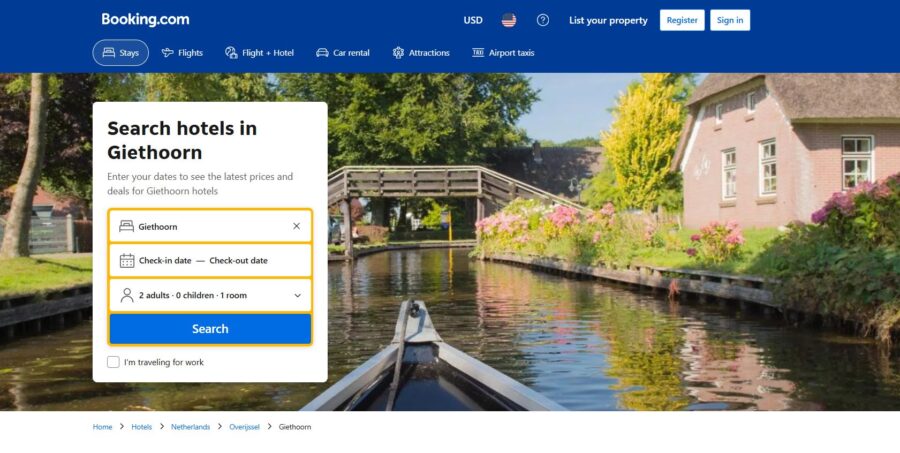
If you love a classic stay with a personal touch, Giethoorn’s small hotels and B&Bs are the way to go. Many are family-run, and breakfasts usually include fresh bread and cheese.
It’s less like a hotel chain and more like staying with friends. I find B&Bs especially lovely in spring and autumn when things are quieter. You can sit outside with a coffee and just watch the boats go by.
If you’re on a budget, these smaller spots often have better deals than bigger hotels. Booking early is smart, especially for summer.
You’ll find a range of options on Booking.com, from simple rooms to upscale guesthouses. Prices vary, but if you plan, the value is usually solid.
Unique Stays Along the Canals
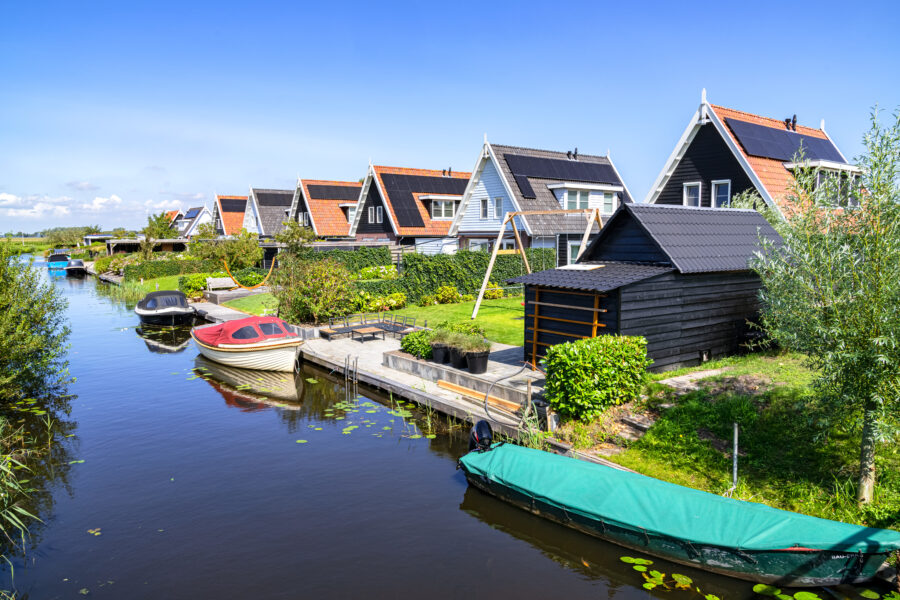
One of the coolest things about Giethoorn? You can stay right on the canals. Some holiday homes or cottages have private docks, so you can rent a boat and set off whenever you want. Waking up to water views is a treat, especially in summer when the canals are bustling.
In winter, canal-side stays feel peaceful and cozy. You might not boat as much, but watching frozen waterways and snow on thatched roofs? It’s magical.
I once stayed in a little cottage where ducks would paddle up to my window every morning. It’s those details that make Giethoorn special. If you want privacy and more space, these rentals are usually your best bet.
Top Picks: Hotel de Harmonie and More
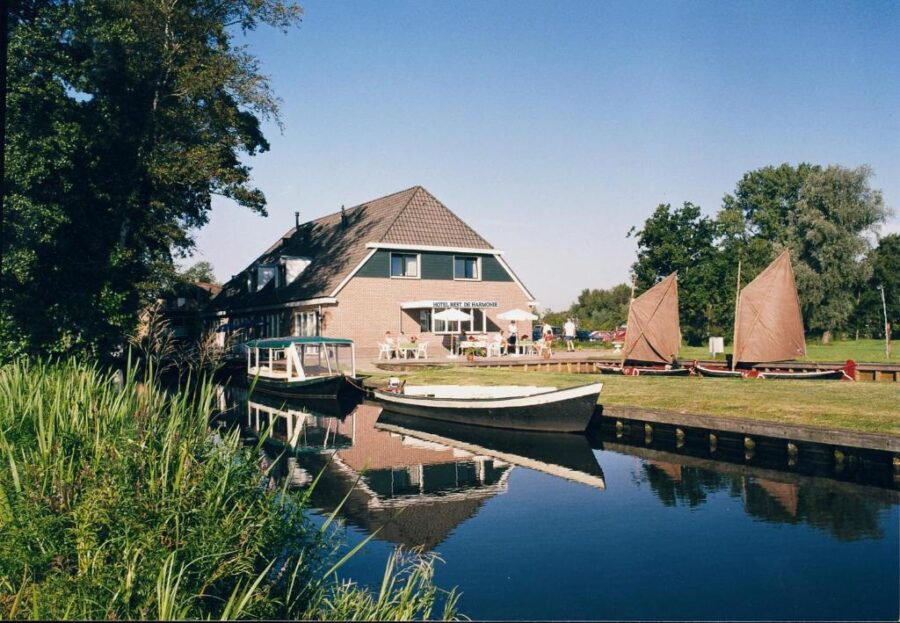
For a reliable, well-reviewed stay, Hotel de Harmonie is a favorite. It’s right on the water, and the canal-view rooms are a treat any time of year. The restaurant downstairs is super convenient if you don’t want to wander far for dinner.
Other good options include boutique hotels and farm stays just outside the village. Farm stays are fun with kids—lots of space, animals, and a quieter vibe than the center.
Couples might prefer smaller boutique hotels with fewer rooms. They have more character and a relaxed feel. Whatever your style—convenient, charming, or unique—Giethoorn’s got something that’ll fit your trip.
Exploring the Surroundings: Weerribben-Wieden National Park
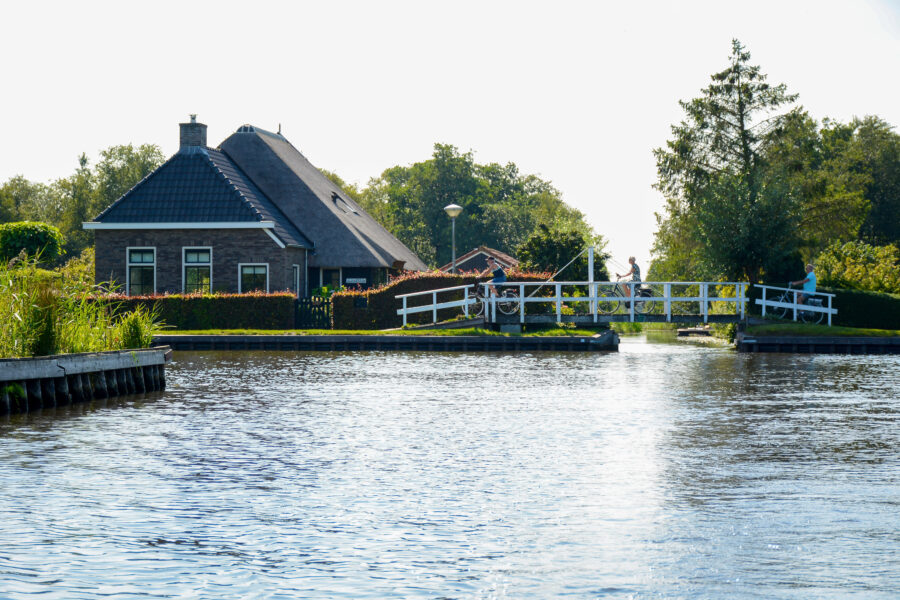
Just outside Giethoorn, you’ll stumble upon one of Western Europe’s biggest freshwater wetlands. Weerribben-Wieden National Park sprawls out with lakes, canals, reed beds, and pockets of quiet forest, inviting you to slow down and move at your own pace.
Honestly, this is the kind of place where you’ll want to ditch the car. Walking shoes, a bike, or even a canoe will take you way further—trust me.
Nature Trails and Outdoor Activities
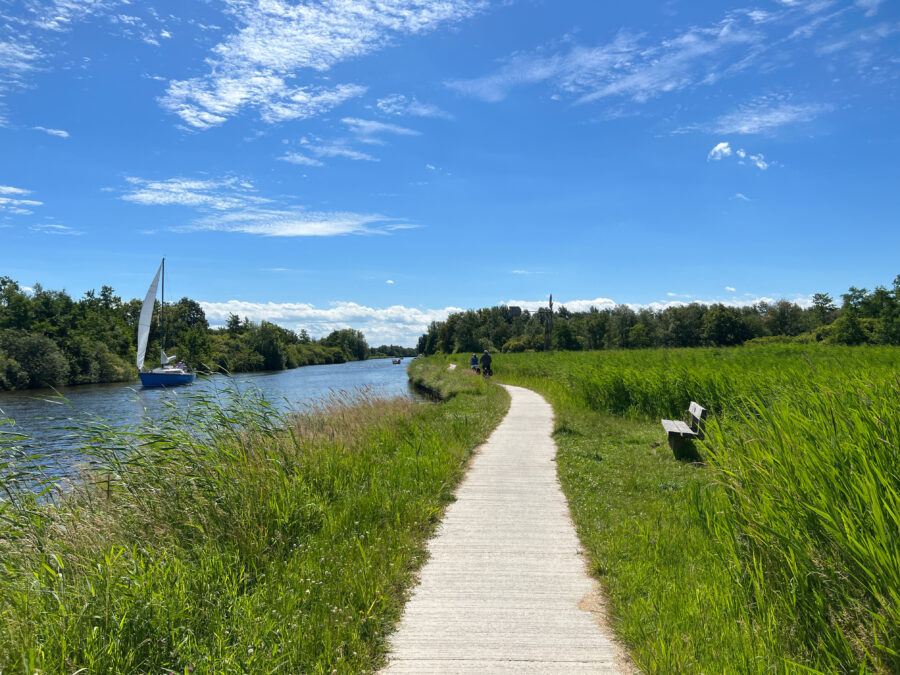
If you love being outside, this park is a total dream. Trails wind through everything from short, easy strolls to longer routes that pull you deep into the reeds and alongside peaceful waterways.
There’s a hush here that’s hard to describe. Sometimes you only hear the wind rustling through the tall grasses.
Cycling? Oh, it’s huge here. Well-marked bike paths link up little villages like Kalenberg and Blokzijl, and you can cover a surprising amount of ground without ever feeling rushed.
Renting a canoe or “whisper boat” is another favorite. The waterways stay calm, so even if you’re not some paddling pro, you’ll be just fine.
I remember renting a little canoe in late spring. Within minutes, I drifted among blooming water lilies—no traffic, no city noise, just me and the water. That’s the kind of moment you keep with you.
Wildlife Watching and Scenic Views
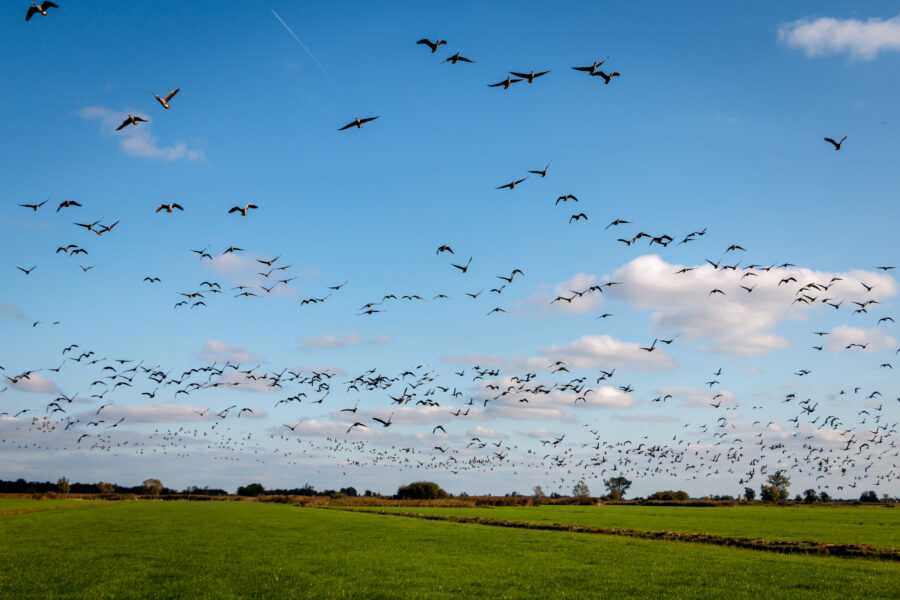
Wildlife thrives in Weerribben-Wieden, and if you’re patient, you might spot an otter slipping into the water. That’s a big deal—they nearly vanished from here years ago.
Birdwatchers flock here, too. Herons, bitterns, sometimes even sea eagles—it’s wild what you might see.
Bring binoculars if you have them. The reed beds are alive with smaller birds, and the open water draws in ducks and swans.
Even if birds aren’t your thing, just soaking in the scenery is worth the trip. Wide meadows, glassy lakes, winding ditches—all mixing for a calm beauty that changes with the seasons.
In summer, the waterways are lined with that bright, fresh green. When autumn rolls in, everything shifts to gold and rust. Every visit feels new, honestly—even if you’ve been before.
Combining Giethoorn with the National Park
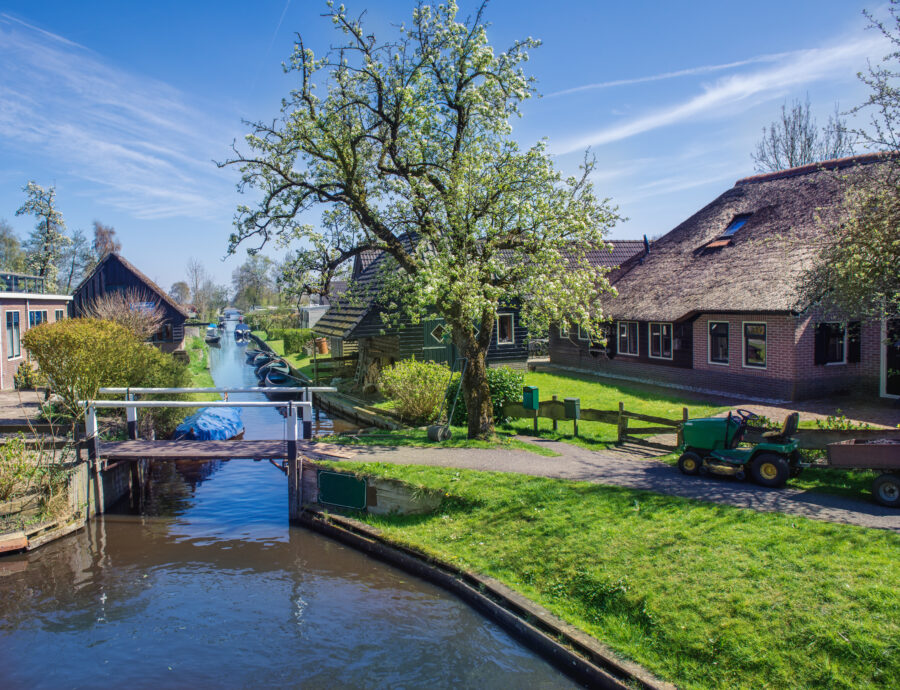
Here’s the best bit: Giethoorn sits right inside the park. You don’t have to go far at all. Spend your morning gliding through Giethoorn’s canals, then head straight out into the wild landscapes of the reserve.
A lot of people rent bikes in Giethoorn and ride out to nearby villages. It’s such a good mix—one minute you’re in postcard-perfect canals, the next you’re surrounded by nature.
Or you can paddle your way from the village canals right into the park’s lakes and ditches. That’s my kind of day.
Honestly, you don’t have to pick between the fairytale charm of Giethoorn and the wild, open spaces of the park. You get both, and that’s what makes the trip feel just right. If you want more info on routes and activities, the official Weerribben-Wieden National Park guide has some great maps and tips.
See Related: Hidden Mountain Towns in Europe That Rival the Alps (But Cost Half as Much)
Frequently Asked Questions
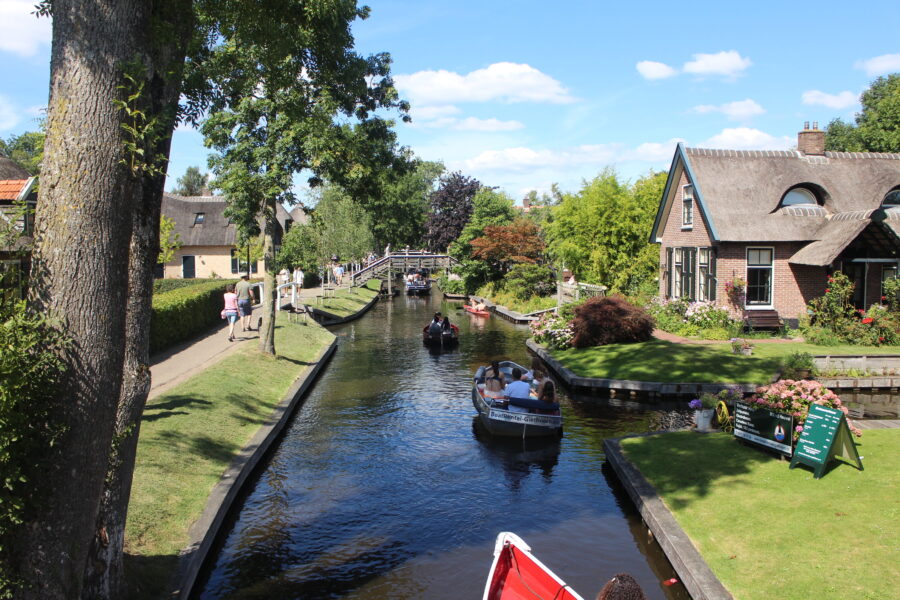
When you visit Giethoorn, timing really shapes your experience. Crowds, weather, even little village traditions—they all change the vibe, so it’s worth knowing what you’re in for.
What are the peak tourist seasons to avoid in Giethoorn for a more authentic experience?
April through October draw the biggest crowds, with July and August (Dutch school holidays) being the busiest of all. Weekends and public holidays like Pentecost and Ascension Day? Packed.
If you want that quieter, more local feel, try a weekday morning outside those times. The canals are so much calmer than in peak season.
How does the weather influence the activities available in Giethoorn throughout the year?
Warm spring and summer days are perfect for boating and cycling. Autumn brings out the colors—great for photographers.
In winter, the canals sometimes freeze, and locals might even skate if you’re lucky. Fewer tourists show up in the colder months, so the village just slows down in the best way.
Can you recommend the best month for a peaceful boat tour in Giethoorn?
Late April or early May hits that sweet spot. Flowers start blooming, the weather’s gentle, and the summer crowds haven’t really arrived yet.
I’ve taken a boat out in May before, and honestly, it felt like I had the waterways to myself.
Are there any special events or local festivals in Giethoorn that are ideal for a visit?
You won’t find huge international festivals in Giethoorn, but there are small local events and Dutch holiday celebrations that give you a real peek into village life.
Around summer, you might catch a boat parade or a community gathering. I love visiting during these smaller events—it adds a local flavor without overwhelming the place.
What are the opening times for the main attractions in Giethoorn, including weekends?
Giethoorn isn’t a museum; it’s a living village. It’s open every day, all year round.
Shops and restaurants usually keep regular business hours, but the real magic is that you can wander or boat around whenever you like. Early mornings and evenings feel especially peaceful, since most day-trippers stick to 11 am –5 pm visiting hours.
How does the experience of visiting Giethoorn differ between the high season and the off-season?
High season? Oh, it’s a whirlwind—boats everywhere, the canals alive with chatter, and every terrace packed with people soaking up the vibe. If you love that kind of buzz, you’ll feel right at home.
But off-season? That’s a different story. The village slows down, and suddenly you can actually hear the gentle splash of oars, the wooden bridges groaning a bit under your feet, and maybe even your own thoughts. It’s quieter, more personal—almost like Giethoorn is letting you in on a secret. Both times have their charm, and honestly, it’s hard to pick a favorite.

